Kanchil is an amazing baby deer from the tropics
By Pictolic https://pictolic.com/article/kanchil-is-an-amazing-baby-deer-from-the-tropics.htmlThere are a lot of strange animals in the world, but this probably surpassed many, and maybe all. Have you ever heard that deer, in addition to plants, can eat insects, fish and even the corpses of other animals? Surprisingly, but the fact is that this deer, which will be discussed further, lives in tropical forests and leads a very strange lifestyle.
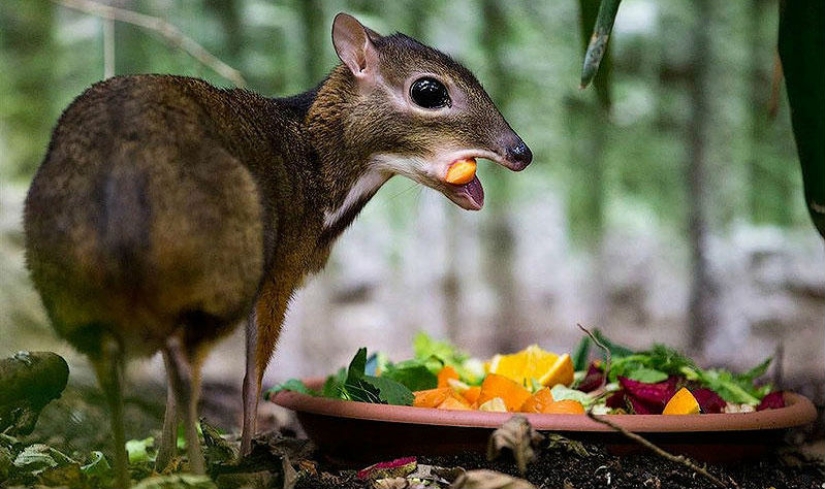

This deer is only 20-25 centimeters tall. And it weighs one and a half kilos. The thickest representatives of the species reach two and a half kilograms.
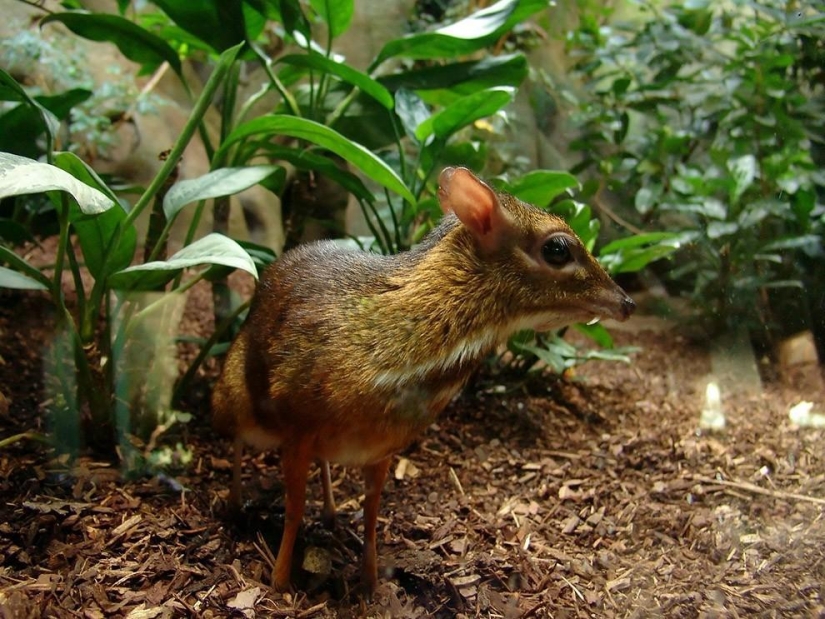
But despite the kinship with artiodactyls, the mouse deer does not have horns — as, indeed, all deer (miniature ungulates). Deer mice are soft and fluffy, they are covered with grayish-brown fur, often with an orange tinge. But these deer have fangs, they are so huge that they even protrude from their mouths. These animals are the smallest representatives of the order artiodactyls.
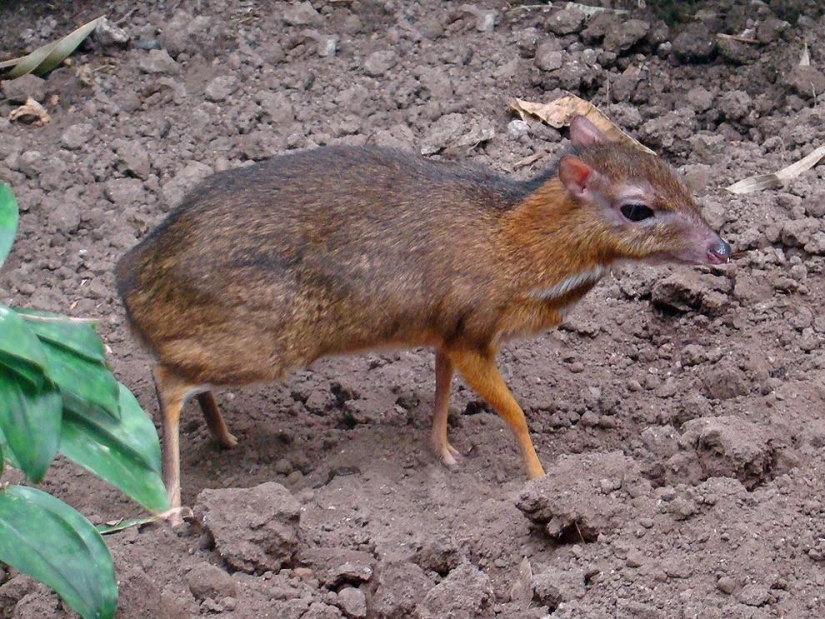
Kanchili (Asian deer, Tragulus) is a genus of artiodactyl animals of the family of deer, includes five species. Outwardly resemble an African deer, but smaller.
The most famous is the large kanchil (Tragulus pari), which has a mass of 5-8 kg, a body length of 70-75 cm and a height of 30-35 cm. It lives on the Malacca Peninsula, on the islands of Sumatra and Kalimantan. The smallest of the deer is the small kanchil (Tragulus javanicus) - inhabits the islands of Sumatra, Kalimantan and Java. The height of this ungulate barely reaches 20-25 cm, and the weight is 2-2.5 kg. The Indian deer (spotted kanchil, Tragulus meminna) lives in India and Ceylon. It is characterized by a dark color with small light spots. According to a number of signs, this species is close to the African deer.
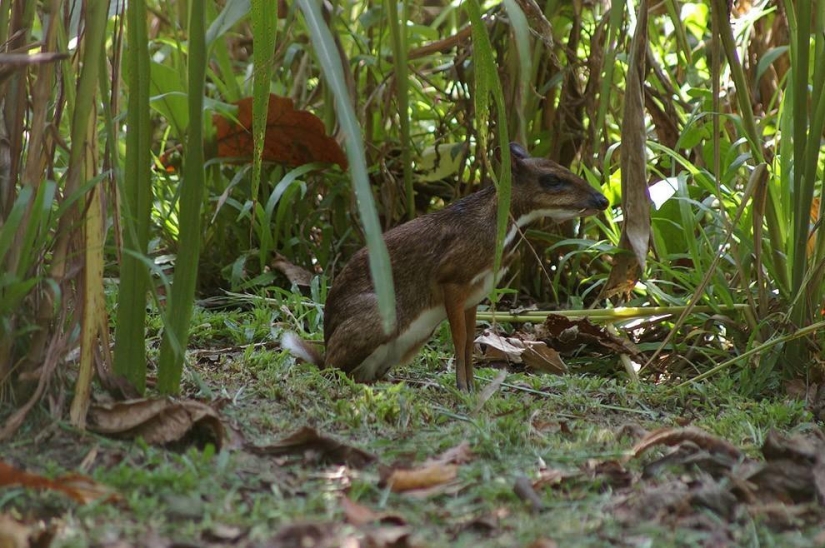
Kanchili inhabit dry forests with rock outcrops and mangroves. They are secretive nocturnal animals leading a solitary lifestyle. Only for a moment you can see kanchil in a dense bush. When pursued, he hides, and when captured, bites. The rut of the kanchils happens in June-July. The duration of pregnancy is 150-155 days. Female kanchilas often bring two calves.
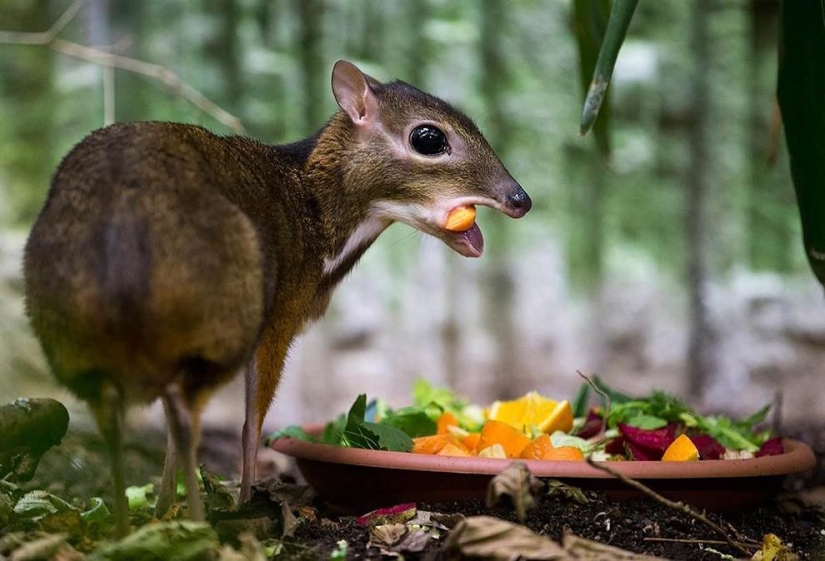
Mouse-like deer reached their heyday in the Miocene (23-5 million years ago), and the first paleontological finds date back to the Oligocene (34 million years ago). Currently, this is a relict, endangered group of animals — the only living representatives of the infraorder Tragulina (Tragulina).
The closest relatives of the kanchils are both deer and pigs. With the first they have a common structure of the dental apparatus and digestive system, and with the second similarity in the structure of the limbs, in particular - in the presence of four fingers. Mouse-like deer are a striking example of the most ancient artiodactyls, from which all others evolved.
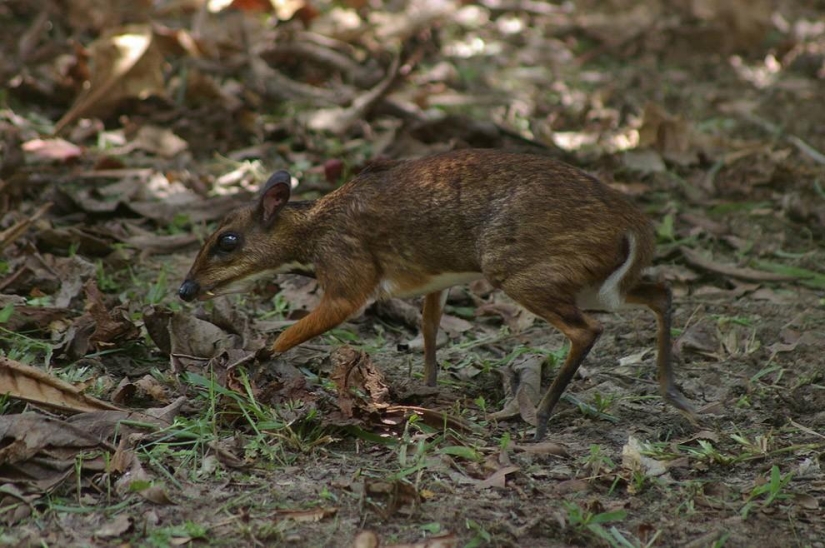
Kanchili inhabit the tropical rain forests of Central Africa and Southeast Asia. Their small size - up to a maximum of 80 cm in the African water kanchili - remarkably help them to move in dense thickets of tropical forests, not to get dirty in swampy soil and forest litter. These animals are very territorial, and each individual occupies, although small — up to 13 hectares, but a permanent piece of forest. During the day, kanchili hide in a wide variety of places, and feed at dusk and at night.
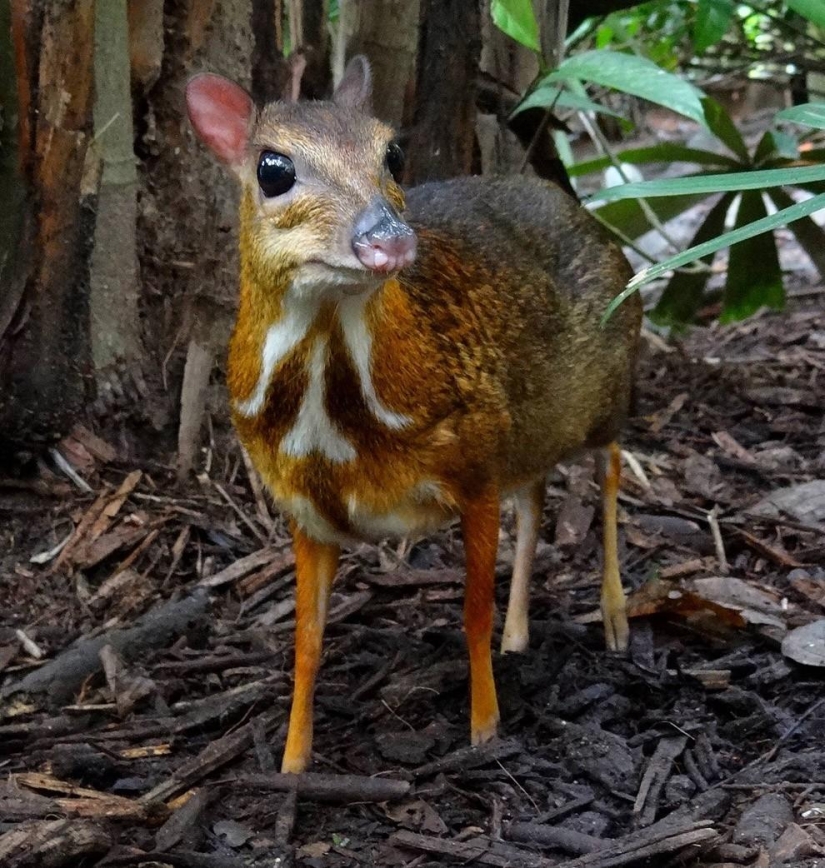
Today there are only five species of these animals on earth. Only one species is found in Africa — the African water kanchil (Hyemoschus aquaticus), and the rest are Asian species: the large kanchil (Tragulus napu), the small kanchil (Tragulus javanicus) and the spotted kanchil (Moschiola mennina). In 2005, a fifth species was described in Sri Lanka - the Sri Lankan kanchil (Moschiola kathygre).
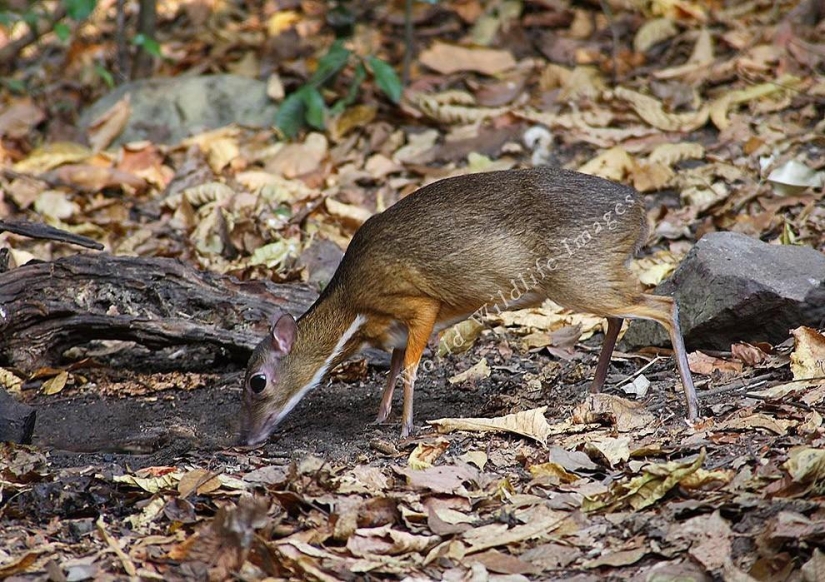
Kanchili eat everything they come across on the way: from leaves of tropical plants, mushrooms, fruits and seeds to beetles, frogs, fish and carrion. Moreover, these deer actively hunt fish in small stakes, streams and rivulets. But the African water kanchil spends a lot of time in the water and can rightfully be called an amphibious mammal — here it feeds and escapes from predators here, while swimming very well.
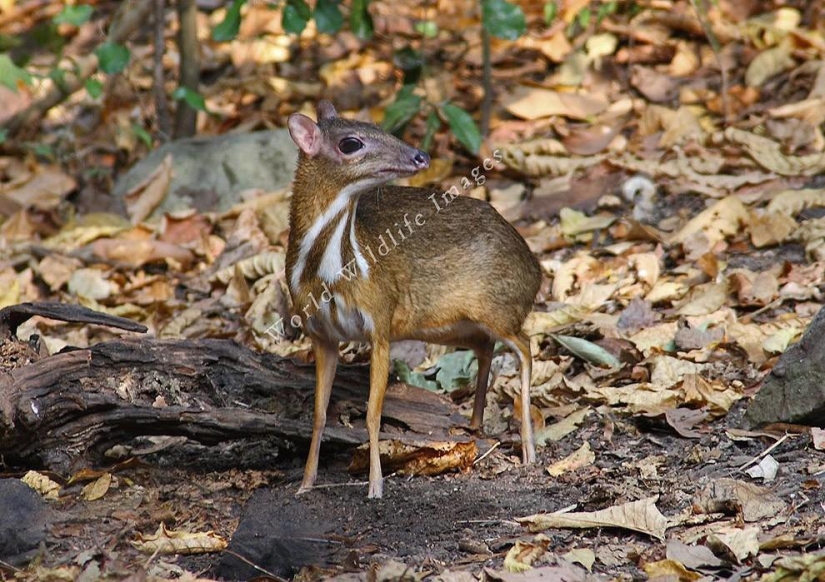
The presence of fangs does not make kanchils impudent. On the contrary, they are very shy animals, leading a secretive lifestyle. They are active mainly at night. During the day they sleep (in rock crevices or hollow logs). And at night they wander in search of food. Big eyes help them navigate in the dark forest. Olenki eat plant food - leaves, flowers, fruits, etc. (they can also crunch some insect casually). Despite the legs with hooves, these mice somehow manage, if necessary, to climb trees. Wonderful are your deeds, O Lord. If danger threatens, kanchili sometimes seek salvation in the water. They swim well and can walk on the bottom for a long time without sticking out.
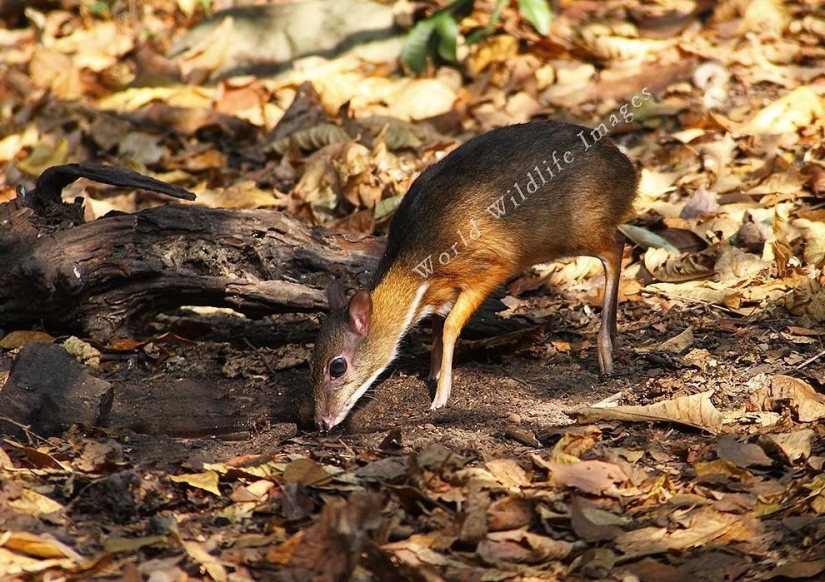
Kanchili, of course, lead a single or monogamous lifestyle. Each kanchili has its own territory in sole possession — about 12 hectares (females have a little less - 8 hectares). That's how much these crumbs need to feel comfortable.
Keywords: Forest | Deer | Smallest | Tropics
Post News ArticleRecent articles

The Celestial Empire is one of the most visited countries in the world. Every year this amazing country is visited by millions of ...

Thousands of children go missing around the world every day. Most of them are still there. Some die or disappear without a trace, ...
Related articles

When you think of dangerous animals that come to mind snakes, rhinos, crocodiles and other clawed, sharp-toothed or poisonous ...

On the eve of the New Year, a magical atmosphere reigns in every house — everything is hung with shiny tinsel, there is an ...

The story of drug smuggling has a lot of amazing occasions, but the case of Coca Bears — one of the most impressive. He became a ...

In the Amazon jungle lives a tribe of Pirogov, the size of which is only 400 people. These people do not sleep, do not know the ...